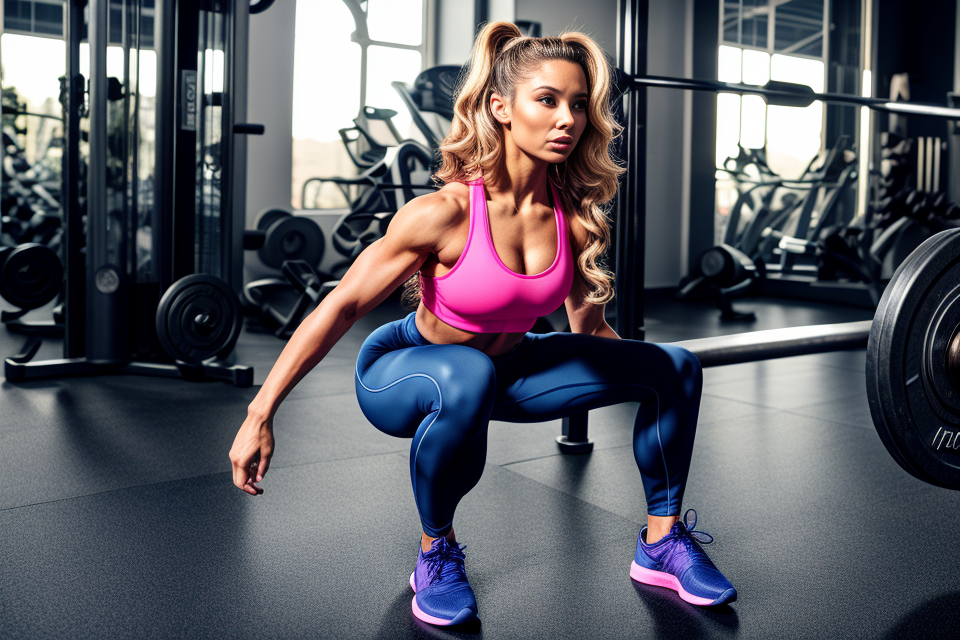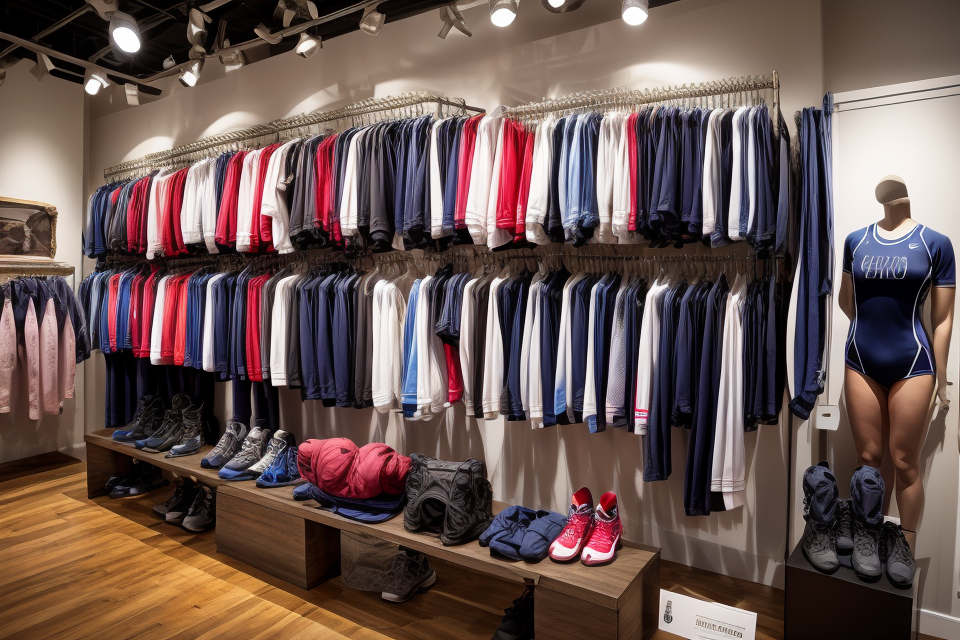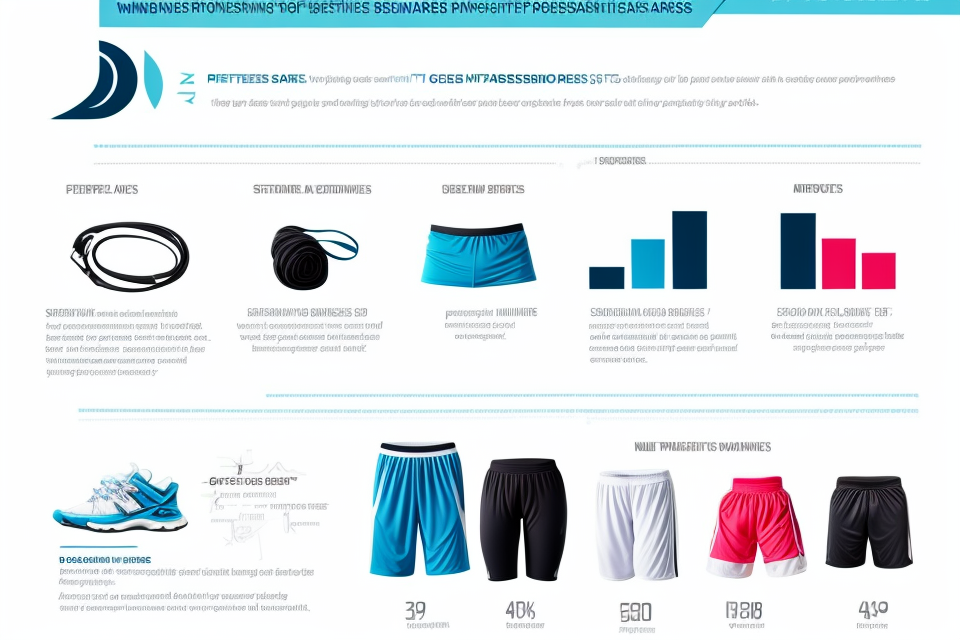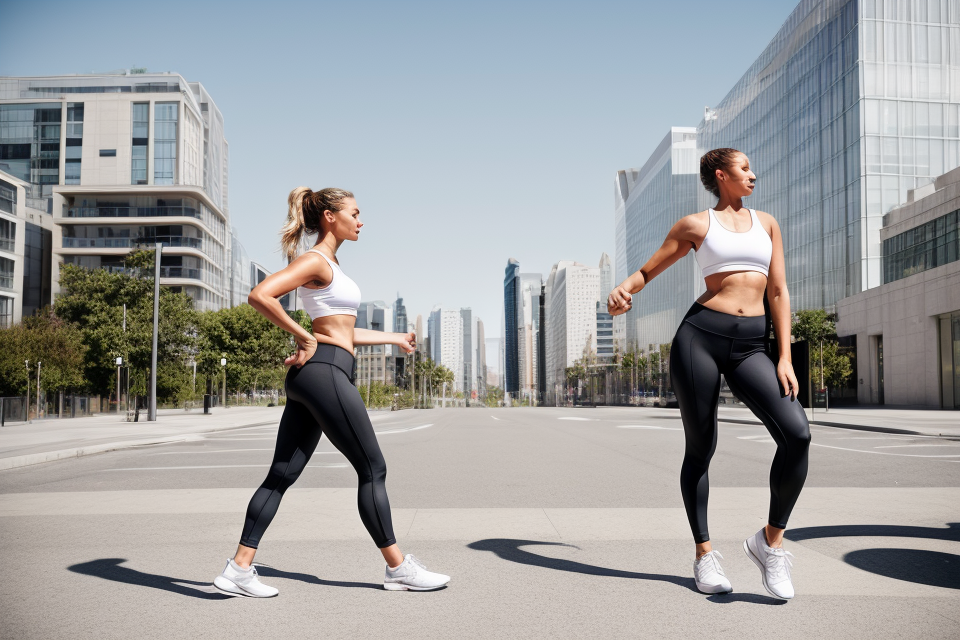When it comes to staying active and healthy, having the right activewear is essential. But how do you know when it’s time to replace your workout clothes? The answer may surprise you – it’s not just about the amount of wear and tear, but also the fabric and technology used in the clothing. In this guide, we’ll explore the factors that affect the lifespan of activewear and provide tips on how to make the most of your investment. Whether you’re a seasoned athlete or just starting out, read on to discover when it’s time to say goodbye to your old activewear and upgrade to the latest and greatest.
Factors That Affect the Lifespan of Activewear
Quality of Materials Used
The quality of materials used in activewear plays a significant role in determining how long it will last. High-quality materials are typically more durable and can withstand more wear and tear than low-quality materials. Here are some details on the two types of materials:
High-Quality Materials
High-quality materials are designed to be long-lasting and can provide excellent performance for a longer period. Some of the key features of high-quality materials include:
- Durability: High-quality materials are made to last longer and can withstand more wear and tear.
- Comfort: High-quality materials are usually soft and comfortable to wear, which makes them ideal for activewear.
- Breathability: High-quality materials are designed to be breathable, which helps to keep you cool and dry during your workout.
- Flexibility: High-quality materials are flexible and allow for a full range of motion, which is essential for activities like running or yoga.
Examples of high-quality materials used in activewear include polyester, nylon, and spandex. These materials are commonly used in athletic wear because they are lightweight, moisture-wicking, and provide excellent support.
Low-Quality Materials
Low-quality materials are typically made from cheaper fabrics that are not designed to last long. Some of the key features of low-quality materials include:
- Short lifespan: Low-quality materials do not last long and may wear out quickly, requiring you to replace them frequently.
- Poor performance: Low-quality materials may not provide the support and comfort you need during your workout, which can affect your performance.
- Lack of breathability: Low-quality materials may not be breathable, which can make you feel hot and uncomfortable during your workout.
- Limited flexibility: Low-quality materials may not be flexible enough to allow for a full range of motion, which can be uncomfortable and limit your performance.
Examples of low-quality materials used in activewear include cotton and synthetic blends. While these materials may be cheaper upfront, they can be less durable and provide poor performance compared to high-quality materials.
In conclusion, the quality of materials used in activewear plays a significant role in determining how long it will last. High-quality materials are designed to be long-lasting, comfortable, breathable, and flexible, while low-quality materials may not last long and may not provide the support and comfort you need during your workout.
Frequency of Use
When it comes to determining how often you should replace your activewear, the frequency of use is a crucial factor to consider. The more often you wear your activewear, the faster it will wear out. This article will delve into the different levels of frequency of use and how they can impact the lifespan of your activewear.
Light to Moderate Use
Activewear that is used for light to moderate activities such as yoga or casual workouts may last longer than you think. On average, you can expect to get about two to three years out of your activewear if you are using it for these types of activities. However, it’s important to keep an eye out for signs of wear and tear, such as fading colors, worn-out seams, or stretched-out fabric.
Heavy Use
If you are an avid athlete or engage in high-impact activities such as running or CrossFit, your activewear will wear out much faster. In this case, you may need to replace your activewear every six months to a year. The constant friction and impact from these activities can cause damage to the fabric and cause it to wear out faster. It’s important to keep an eye out for signs of wear and tear, such as frayed seams, worn-out elastic, or discoloration.
It’s also important to note that the type of activewear you are using can also impact its lifespan. For example, shoes and socks made from synthetic materials may not last as long as those made from natural materials such as wool.
In conclusion, the frequency of use is a crucial factor to consider when determining how often you should replace your activewear. If you engage in light to moderate activities, you may be able to get away with replacing your activewear every two to three years. However, if you engage in heavy use, you may need to replace your activewear every six months to a year. It’s important to keep an eye out for signs of wear and tear and to replace your activewear when necessary to ensure your safety and comfort during your workouts.
Type of Activity
When it comes to determining how often you should replace your activewear, the type of activity you participate in plays a significant role. Activewear is designed to withstand different levels of wear and tear, depending on the intensity of the activity. In this section, we will discuss the two main types of activities and how they impact the lifespan of your activewear.
Low-Impact Activities
Low-impact activities, such as yoga, Pilates, and brisk walking, typically put less strain on your activewear compared to high-impact activities. As a result, the lifespan of your activewear will generally be longer. However, there are still factors to consider when determining how often you should replace your activewear for low-impact activities.
- Frequency of Use: If you regularly participate in low-impact activities, you may need to replace your activewear more often due to the increased wear and tear.
- Material Quality: The quality of the material used in your activewear will also impact its lifespan. For example, if your activewear is made from a higher quality material, it will likely last longer than a cheaper alternative.
High-Impact Activities
High-impact activities, such as running, jumping, and dancing, put more stress on your activewear due to the repetitive movements and impact on the ground. As a result, the lifespan of your activewear will generally be shorter compared to low-impact activities. Here are some factors to consider when determining how often you should replace your activewear for high-impact activities:
- Frequency of Use: If you regularly participate in high-impact activities, you may need to replace your activewear more often due to the increased wear and tear.
- Type of Material: Some materials, such as cotton, may not be as durable as synthetic materials, which can withstand more wear and tear.
- Design: The design of your activewear can also impact its lifespan. For example, activewear with reinforced stitching or double-layered material in high-wear areas may last longer than those without these features.
Body Composition and Size
Larger Bodies
When it comes to larger bodies, the lifespan of activewear may be shorter than those with smaller bodies. This is because the added weight and pressure on the clothing can cause wear and tear on the fabric, seams, and elasticity. As a result, larger individuals may need to replace their activewear more frequently, particularly in areas that experience the most movement and friction, such as the underarms, thighs, and waist.
Smaller Bodies
On the other hand, those with smaller bodies may find that their activewear lasts longer than those with larger bodies. This is because there is less weight and pressure on the clothing, which means that the fabric, seams, and elasticity are less likely to experience wear and tear. However, smaller individuals should still pay attention to the fit and quality of their activewear, as ill-fitting or poorly made clothing can still lead to discomfort and reduced performance.
Overall, the lifespan of activewear can vary greatly depending on body composition and size. While larger individuals may need to replace their activewear more frequently, those with smaller bodies may find that their clothing lasts longer. It’s important to consider these factors when deciding how often to replace your activewear, as well as your personal preferences and budget.
Signs That It’s Time to Replace Your Activewear
Comfort
- Loss of Support
- Fit Issues
- Appearance
- Smell
Loss of Support
When your activewear no longer provides the support you need, it’s time to replace it. This can happen due to wear and tear, washing, or simply the natural breakdown of the material. The loss of support can lead to discomfort during your workout, which can negatively impact your performance. It’s essential to listen to your body and replace your activewear when it can no longer provide the support you need.
Fit Issues
Over time, activewear can stretch out or lose its shape, causing fit issues. If your activewear is too loose or too tight, it can cause discomfort during your workout. This can also lead to a decrease in performance and increase the risk of injury. It’s important to regularly assess the fit of your activewear and replace it when necessary to ensure you have the right fit for your workout.
Appearance
While appearance may not be the most important factor in deciding when to replace your activewear, it’s still worth considering. Activewear that is worn out or has visible stains or damage can be unappealing to wear. This can affect your confidence during your workout and may even deter you from wearing it altogether. It’s important to take care of your activewear and replace it when it’s no longer visually appealing.
Smell
Activewear can absorb sweat and odors, especially if it’s not washed regularly. Over time, this can cause your activewear to develop a strong smell that can be unpleasant to wear. While washing your activewear can help to remove odors, it may not be enough. If your activewear has a strong smell that won’t come out, it’s time to replace it. This will not only improve the smell but also help to prevent skin irritation and other issues that can arise from wearing smelly activewear.
Functionality
Pilling
Pilling is a common issue that occurs when activewear is worn frequently. Pilling is caused by the formation of small balls of fibers on the surface of the fabric. While pilling may not affect the functionality of the activewear immediately, it can reduce the overall quality and appearance of the garment. If you notice pilling on your activewear, it may be time to replace it.
Discoloration
Activewear that is worn regularly may start to show signs of discoloration over time. This can be caused by sweat, dirt, or simply by the natural breakdown of the fabric. Discoloration can make your activewear look old and worn, and it may also be a sign that the fabric is starting to weaken. If you notice discoloration on your activewear, it may be time to replace it.
Wear and Tear
Wear and tear is a natural part of the aging process for any piece of clothing, including activewear. Over time, the fabric may start to fray, and the seams may start to come apart. If you notice any signs of wear and tear on your activewear, it may be time to replace it. Wear and tear can affect the functionality of the garment, and it may also make it less comfortable to wear.
It’s important to keep an eye on the functionality of your activewear, as it can affect your performance during workouts and other activities. If you notice any signs of pilling, discoloration, or wear and tear, it may be time to replace your activewear to ensure that you have the best possible performance and comfort.
Safety
When it comes to safety, it’s important to be aware of the potential risks associated with wearing worn-out activewear. Here are some signs that indicate it’s time to replace your activewear for safety reasons:
- Fraying: Fraying is a common sign that your activewear has reached the end of its lifespan. This can occur when the fabric becomes thin or weakened, causing the edges to unravel. Fraying can pose a safety risk, as it can cause tears or rips in the fabric, which can be hazardous during activities such as running or weightlifting.
- Seam Splitting: Seam splitting is another safety concern when it comes to activewear. This occurs when the stitching that holds the seams together breaks or becomes loose, causing the seam to split. This can happen suddenly during a workout, leaving you with a potentially dangerous situation if the seam splits completely.
In both cases, it’s important to replace your activewear to ensure your safety while exercising. Wearing damaged activewear can increase the risk of injury, so it’s essential to prioritize your safety by investing in new activewear when necessary.
Tips for Extending the Lifespan of Your Activewear
Proper Care and Maintenance
Washing and Drying
Activewear should be washed after every wear, but it’s essential to follow the care label instructions to avoid damaging the fabric. Cold water wash is usually recommended, as hot water can cause shrinkage and damage to the fibers. Avoid using chlorine bleach on activewear made from protein-based fibers like silk and wool, as it can cause them to yellow. Instead, opt for a color-safe laundry detergent or a non-chlorine bleach.
Ironing
Ironing is a great way to remove wrinkles and creases from your activewear, but it should be done with caution. Always iron the inside of the garment first to prevent scorch marks. Use a low heat setting and place a towel or piece of cloth over the area being ironed to protect the fabric. Steam ironing is a safer option, as it doesn’t require direct contact with the fabric.
Storing
Proper storage can help prevent damage to your activewear. Hang your garments in a cool, dry place with good ventilation, away from direct sunlight. Avoid folding your activewear, as it can cause creases and permanent wrinkles. Instead, roll or hang your garments to maintain their shape and prevent damage.
Repair and Alteration
Maintaining your activewear can help you get the most out of your investment. Repairing and altering your activewear can prolong its lifespan and keep it in good condition. Here are some tips for repairing and altering your activewear:
DIY Repairs
DIY repairs can be a cost-effective way to keep your activewear in good condition. Some common DIY repairs include:
- Seam repair: If you notice a loose or broken stitch, you can fix it by hand. You can also use a seam ripper to remove the stitch and then resew it.
- Button replacement: If a button falls off, you can replace it with a new one of the same size and style.
- Zipper repair: If your zipper is stuck or broken, you can replace it with a new one of the same size and style.
Professional Alterations
While some repairs can be done at home, others may require the help of a professional. Professional alterations can include:
- Hemming: If your activewear is too long, a professional can hem it for you.
- Taking in or letting out seams: If your activewear is too loose or too tight, a professional can adjust the seams for you.
- Mending tears: If your activewear has a tear, a professional can mend it for you.
It’s important to note that professional alterations can be more expensive than DIY repairs, but they can also be more durable and long-lasting.
Choosing the Right Clothing for Your Activity Level and Body Type
Finding the Right Size
Properly fitting activewear is crucial for both comfort and performance. It is essential to take accurate body measurements to ensure that your activewear fits you correctly. Measure your body while wearing something snug, such as a tight-fitting shirt or shorts, to get the most accurate results. Remember that your measurements may change depending on your activity level, so it’s essential to re-measure periodically.
Choosing the Right Fabric
The right fabric can make all the difference in your activewear’s lifespan. Different fabrics have varying levels of durability, moisture-wicking capabilities, and breathability. For example, materials like polyester and nylon are strong and resistant to tears, making them ideal for high-impact activities. Moisture-wicking fabrics like cotton and bamboo are excellent for keeping you dry during intense workouts. In addition, consider the type of activity you’ll be doing and choose a fabric that can withstand the demands of the activity.
In conclusion, choosing the right clothing for your activity level and body type is essential for maximizing the lifespan of your activewear. Properly fitting activewear and choosing the right fabric can make all the difference in your comfort and performance.
Alternatives to Activewear
Athletic Shoes
While activewear is designed for workouts, athletic shoes are specifically designed for supporting the feet during physical activity. Investing in a good pair of athletic shoes can greatly improve your overall workout experience and reduce the risk of injury. Athletic shoes are typically designed for specific activities, such as running or weightlifting, so it’s important to choose the right pair for your needs. Additionally, athletic shoes can be worn for everyday wear, making them a practical alternative to activewear.
Athletic Shorts
Athletic shorts are another alternative to activewear that can be worn for a variety of activities. They are designed to provide comfort and support during physical activity and are often made from moisture-wicking materials to keep you dry and comfortable. Athletic shorts can be worn for running, cycling, and other activities that require freedom of movement. They can also be worn as part of your everyday wardrobe, making them a versatile alternative to activewear.
Yoga Mats
While yoga mats are primarily used for yoga and stretching, they can also be used as a practical alternative to activewear. Yoga mats are designed to provide a non-slip surface and support during exercise, making them a great option for activities such as Pilates and floor exercises. They can also be used as a surface for stretching and relaxation after a workout. Investing in a high-quality yoga mat can greatly improve your workout experience and provide support during your practice.
FAQs
1. How do I know when it’s time to replace my activewear?
It’s time to replace your activewear when it becomes worn out, damaged, or no longer fits properly. Some signs that your activewear needs to be replaced include holes, fading, discoloration, and loose threads. Additionally, if your activewear is more than a year old, it’s a good idea to replace it even if it still looks new.
2. What are the benefits of replacing my activewear regularly?
Replacing your activewear regularly can improve your performance, comfort, and safety while working out. Worn-out activewear can be less comfortable, fit poorly, and may even pose a safety risk. Replacing your activewear regularly can also help you look and feel your best while working out.
3. How often should I replace my activewear?
It’s recommended to replace your activewear every six months to a year, depending on how often you wear it and how well it holds up. If you wear your activewear every day, you may need to replace it more frequently. However, if you only wear it occasionally, you may be able to get away with replacing it less often.
4. Is it necessary to replace my activewear after every workout?
No, it’s not necessary to replace your activewear after every workout. However, if you notice any signs of wear and tear or damage after a workout, it’s a good idea to inspect your activewear and replace it if necessary.
5. How can I prolong the life of my activewear?
There are several ways to prolong the life of your activewear. One of the most important things you can do is to wash it properly. Follow the care instructions on the label and avoid using harsh detergents or fabric softeners. Additionally, avoiding exposing your activewear to extreme temperatures, such as leaving it in the car on a hot day or hanging it outside to dry, can help prolong its life. Finally, storing your activewear in a cool, dry place can help prevent damage.



